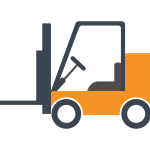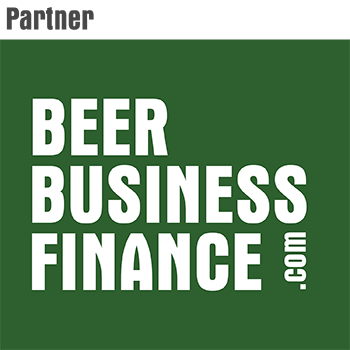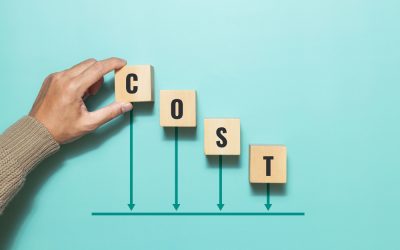 How to Keep Track of Brewery Assets
How to Keep Track of Brewery Assets
“One of the great responsibilities that I have is to manage my assets wisely, so that they create value.” – Alice Walton
Breweries have a lot of expensive assets. Kegs, tanks and packaging equipment can add up to hundreds of thousands or even millions of dollars.
Do you have a good system to keep track of and manage your assets so that they create value?
In this article we’ll review best practices for tracking and safeguarding your assets. We’ll look at how to use asset tags and fixed asset software so that you can feel confident that all your assets are properly recorded on the books.
How to Track your Fixed Assets:
- Fixed Asset Best Practices
- How to Use Asset tags
- The Basics of Fixed Asset Software to track your Stuff
Fixed Asset Basics
Assets are things that you own: kegs, tanks, and brew house equipment. The term Fixed Assets, simply means that the asset will last a long time.
Fixed assets are recorded on your balance sheet along with your liabilities and equity.
When you buy a new canning line, for example, the amount of the purchase is recorded on your balance sheet as an asset. Any additional costs to get the equipment up and running are included in the value of the asset.
As new fixed assets are purchased they are added to the balance sheet. Below is an example of what this looks like:
The balance sheet uses categories to capture the fixed asset purchases. Brewing equipment, for example, might include the brew house and a dozen tanks purchased at different times. Cooperage may include hundreds or thousands of kegs, purchased over many years.
The balance sheet provides a summary of the type of fixed assets owned and the total cost in each category.
Fixed Asset Best Practices
The first best practice is to create a policy for fixed assets. The policy is a set of rules that will determine how you purchase and record your fixed assets. It serves as a road map that your team can use so that your assets are properly accounted for.
The fixed asset policy should include the following items:
- Rules to define fixed assets. For example, asset purchases over $1,000 that will last more than a year, will be recorded as fixed assets on the balance sheet.
- Rules for purchasing. Any spend over $1,000 will require at least two competitive quotes and approval by the brewery owner prior to committing to the spend.
- Fixed assets will be counted and reconciled on an annual basis. Just like a physical count of your finished goods or raw material inventory, you should count and reconcile your fixed assets at least annually.
- Disposition or sale of fixed assets. When an asset is sold or scrapped, the fixed asset listing and balance sheet will be updated to account for the transaction.
The next best practice is to keep a file of all invoice copies when equipment is purchased. The invoices should be kept in a separate file (electronic or old fashioned). This way you’ll have a complete list when it comes time to update your fixed assets and depreciation schedules. More on this later.
Test your fixed assets for Completeness and Accuracy. Accountants love these terms: Completion and Accuracy, and they can help ensure your fixed assets are properly recorded.
Completeness means that the fixed asset listing shows everything you own. To test this, walk the brewery, identify a fixed asset and then locate it on the listing. If you can’t find it, the asset list may be incomplete.
Accuracy means that items on the fixed asset listing actually exist. Very often, assets are sold or scrapped and the listing is not updated. To test this, take the asset listing and find the physical assets in the brewery. This is like a game of hide and seek. Hopefully your assets come out to play.
Tracking Systems: Asset Tags
Asset tags allow you to identify fixed assets using a barcode. The idea is to stick the tags on every fixed asset item that you want to track.
The asset tag number on the equipment will be the same number on the fixed asset listing, making it easy to check for completeness and accuracy.
Asset tags come in all shapes and sizes. Most are heavyweight stickers with a strong adhesive so they don’t peel off the equipment. The unique barcode allows for scanning the tag, which makes counting and identifying equipment easier.
The tags can be used to track equipment if it moves from one location to another. For example, if you have multiple warehouses and equipment is moved from one location to another.
Lastly, asset tags are inexpensive to purchase and easy to set up. As far as best practices go, asset tags are near the top of the list.
Fixed Asset Software
Once you have your fixed asset best practices on paper, and asset tags on your equipment, it’s time to install software to automate the process.
We use Fixed Assets CS software from Thomson Reuters. The software tracks all the asset details, including:
- Asset Groups. Equipment, vehicles, brewery improvements, etc.
- Asset Number. The number on the asset tag.
- Description of the asset.
- Date in service. Date the asset was purchased and placed in service.
- Purchase price of asset.
- Depreciation expense. Current and prior depreciation expense.
- Net book value. The net value of the asset (Cost minus total depreciation expense).
- Tax period. The useful life of the asset. For example, 5 years for a new truck.
- Tax method. Accounting mumbo jumbo that tells you how the asset is depreciated. For example,straight-line depreciation expenses the asset evenly over its useful life.
Don’t get lost in the details; just know that good depreciation software can make tracking your fixed assets easier.
Wrap Up + Action Items
Breweries invest a lot of money in equipment. Make sure you invest in a fixed asset process to safeguard and properly track all those assets.
Develop a fixed asset policy, or borrow from the one listed above. The policy is a simple set of rules that will guide purchasing decisions and management of your assets.
Invest in asset tags for your equipment. These barcode stickers make asset tracking a piece of cake. They are inexpensive, and easy to apply to your assets.
Use fixed asset software to keep all your asset details in one place. The software will track all the information you need to know about your assets, including depreciation expense. Your accountants will appreciate this as well.
Now, get out there and track those assets. Your financial statements are counting on you.





